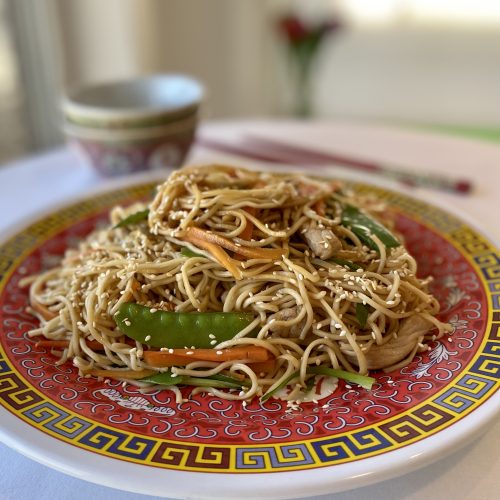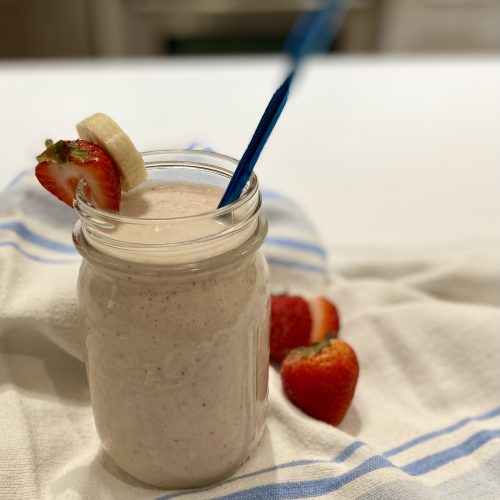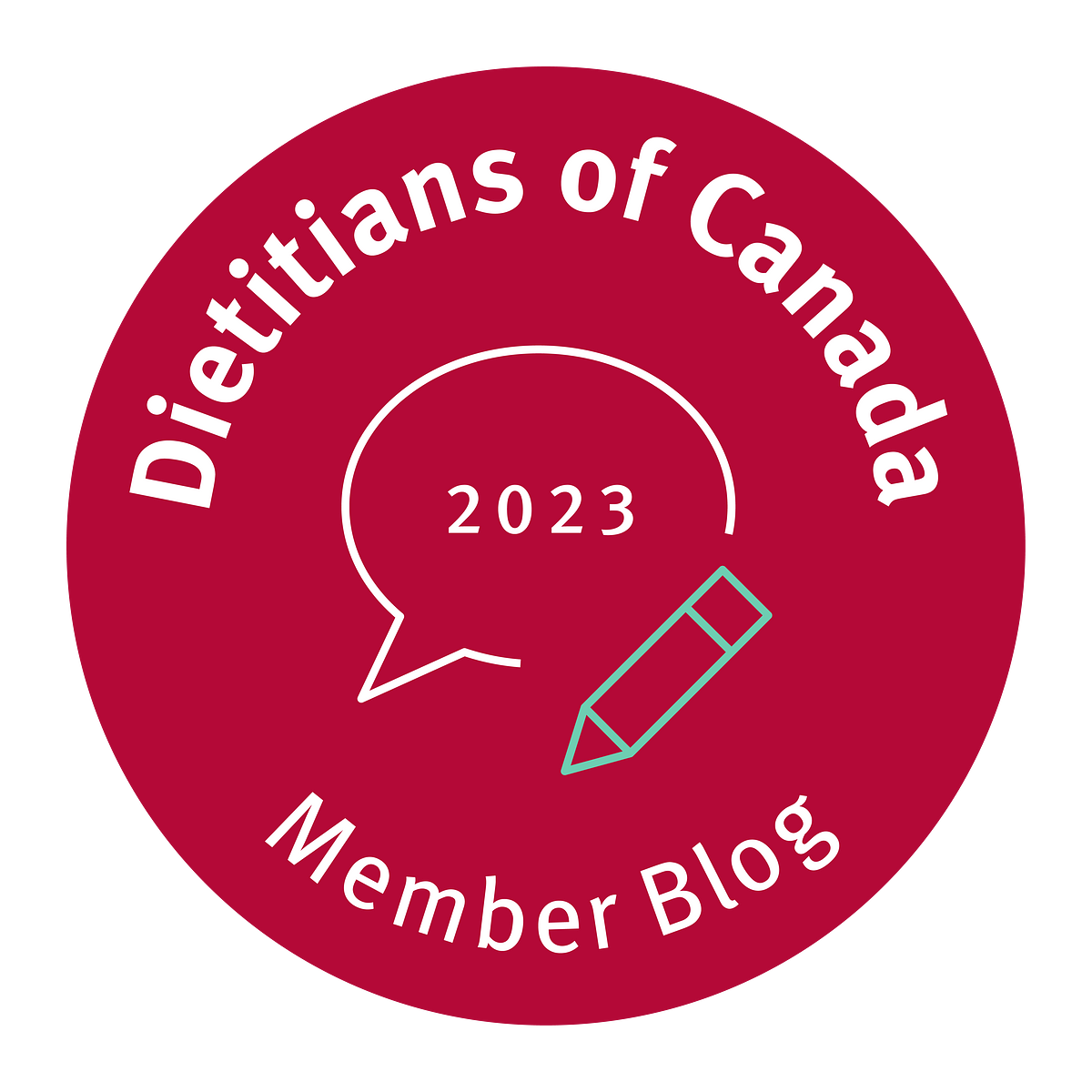
Easy Pork Stir Fry
This recipe is bursting with flavours - ginger, garlic, soy sauce and sesame oil! Ready in less than 30 minutes!
Ingredients
- 1 lb pork tenderloin
- 2 tsp ginger, minced
- 2 cloves garlic, minced
- 1/2 cup light soy sauce
- 3 tsp sesame oil
- 5 tsp rice vinegar
- 1 1/2 cups snow peas
- 1 large carrot, sliced thinly
- 1 package dried chow mein noodles (454 g or 1 lb) (or substitute your favourite long noodle)
- 2 tsp vegetable oil (canola, sunflower, peanut, etc.)
- 4 green onions, sliced thinly
- 2 Tbsp sesame seeds, toasted
Instructions
- Trim off the silver skin from the pork (this is the silvery-white connective tissue that is tough and doesn't dissolve upon cooking). Slice the pork into thin strips and place in a bowl.
- Make the marinade / sauce. In a small bowl, combine the ginger, garlic, soy sauce, sesame oil and rice vinegar. Pour about 1/3 of the marinade over the pork strips. Allow pork to marinate at room temperature while you prepare the other ingredients.
- Cook noodles in a large pot according to package directions. In the last minute of cooking, add snow peas and carrots to the pot. Drain noodles, snow peas and carrots, and rinse under cold water.
- Heat oil on medium-high heat in a large frying pan or wok. Add the marinated pork. Stir fry for about 4-5 minutes or until the pork is no longer pink.
- Add noodles and veggies to the frying pan or wok. Add green onions. Toss to mix all of the ingredients. Pour remaining marinade over noodles and toss so that noodles are evenly coated with the sauce.
- Sprinkle with sesame seeds and enjoy!
Notes



